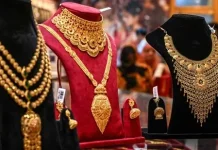Britain debates on how to confront its racist history as anti-racism protests rage on
If Britons wanted a reason to protest against institutional racism, or police brutality, they didn’t have to look 4,000 miles away. There have been plenty of local examples over the years. “I can’t breathe” will have resonated with many black families here.
That’s why the killing of George Floyd has been a call to action in the UK too. An estimated 137,500 people have attended more than 200 protests in recent days.
One produced an iconic picture of global outrage: The toppling in Bristol of the statue of Edward Colston, a 17th century slave trader. Protesters dragged the bronze bulk through the streets and dumped it in Bristol Harbor.
The contours of deprivation, discrimination and vulnerability are similar in Britain, even if race isn’t discussed as widely and is sometimes hard to disentangle from the deep class biases that linger in British society. Within the criminal justice system, the patterns will look very familiar to Americans
Colston had been a lawmaker and, most important, an official of the Royal African Company, overseeing the transport of more than 80,000 African people to America as part of a lucrative slave trade. He profited handsomely from peddling men, women and children, many of whom died on the journey. He was feted as a philanthropist as he spread his wealth.
Gone from its plinth
Regardless of his beneficence, the statue was abhorrent, especially since its plaque gave no indication about his source of wealth. Whether it should have been removed to a museum, destroyed or relabelled was a matter of long debate — too long. One might question the manner of its removal, but not that it’s gone from its plinth.
America’s racial divide — what Georgetown University President John DeGioia calls “the original fault line in our republic” — is seared into its politics, culture, media, conversation and the reality of daily life for many. While the US may be an extreme case, it isn’t unique.
The contours of deprivation, discrimination and vulnerability are similar in Britain, even if race isn’t discussed as widely and is sometimes hard to disentangle from the deep class biases that linger in British society. Within the criminal justice system, the patterns will look very familiar to Americans.
Black, Asian and minority ethnic (BAME) people are more than four times as likely to be stopped and searched by police in England and Wales as white people.
For black people, it’s nearly 10 times. They are more than three times as likely to be arrested as white people, and more than five times as likely to have force used against them. Custodial sentences are longer too.
It used to be much worse. For decades, Britain’s anti-discrimination laws didn’t apply to policing. The underlying assumption was that racial minorities posed a law-and-order danger.
The shock 1993 murder of the black teenager Stephen Lawrence, in a racist attack by a suspected gang of five or six white youths, set off a series of events culminating in far greater public awareness of the problem and a degree of reform.
A bungled police investigation prompted a campaign for justice, resulting in a public inquiry led by William Macpherson. By the time the report was published in 1999, nobody was surprised by the conclusion of institutional racism within the police force.
Some things have changed for the better as a result. An amendment to the Race Relations law made police liable for acts of racial discrimination.
The problem persists
The UK has an Independent Police Complaints Commission (IPCC) and a number of non-governmental organisations such as the Institute of Race Relations. The police are subject to inspections, scrutiny and freedom of information requests.
And yet, the problems persist. Police officers are rarely prosecuted for deaths in custody and only 1.2% of them are black. More than 15 years after Macpherson’s recommendations, a report from the Runnymede think tank found that “systemic and institutional racism persists” in British policing.
Racial tensions have been increasing again in Britain, with more violence against minorities since the Brexit vote. The writer Jude Yawson, co-author with grime artist Stormzy of his book “Rise Up,” wrote in March: “To exist as a historically conscious black or Asian person in Britain is to exist knowing that a majority of your white counterparts do not acknowledge your history.”
Many black and Asian Brits, who have experienced racism at a micro, macro, and systemic level, combat it every day to different degrees. But their complaints are often dismissed, or downplayed, when they appear on national media.
Rather than listening to people’s justified grievances or attempts to shift mainstream opinion from entrenched positions, there are jibes about pandering to “wokeness.”
Racial inequalities
The Covid-19 epidemic has also pulled back a curtain on racial inequalities that shows how big a price minorities pay for disadvantages in schooling, job opportunities, housing and access to health care.
We know black people are four times more likely to die from the novel coronavirus than white people, according to the Office of National Statistics.
A review published by Public Health England also found that the risk of dying is higher in poorer areas and higher in BAME groups, although the report seemed to pull its punches.
Prime Minister Boris Johnson was slow at first to appreciate how deeply Floyd’s killing resonated in Britain. His initial appeal to observe social-distancing rules was ignored. Home Secretary Priti Patel has focused on the “thuggery,” although most of the protests were peaceful.
However, Johnson seems to have realised that he can’t ignore the outcry. He said Floyd’s dying words “have awakened an anger and a widespread and incontrovertible, undeniable feeling of injustice, a feeling that people from black and minority ethnic groups do face discrimination: in education, in employment, in the application of the criminal law.” Rather than dismissing the fury of the protesters, he recognised that it “will be founded on a cold reality.”
The protests may have been sparked by an event thousands of miles away in another country, but there’s a message for Johnson too: If he’s serious about “rebalancing” Britain, it will take more than just new hospitals and bridges.


